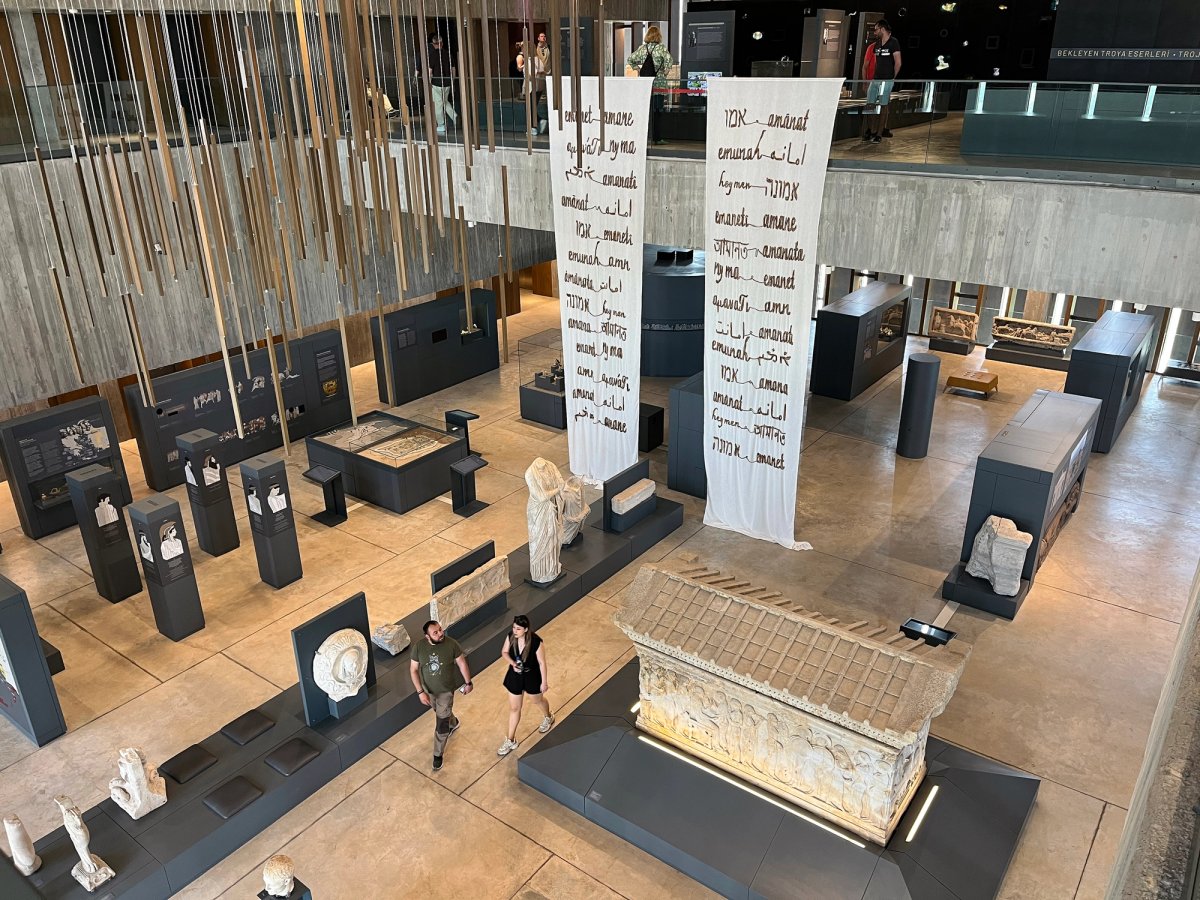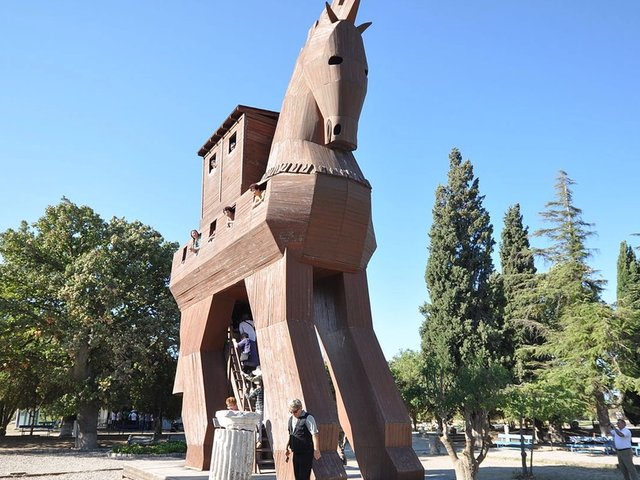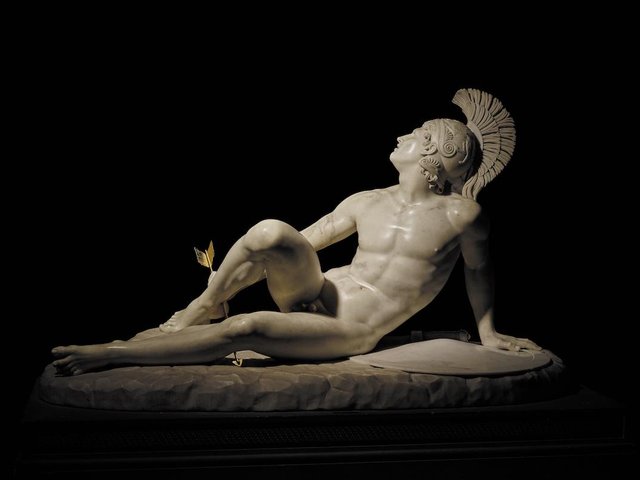The archaeological Museum of Troy in western Turkey has opened an expansive contemporary art exhibit, installing some of the work in its main halls for the first time, in a push to bridge its stewardship of the past with current artistic production.
Work from the show Emanet, which can be translated as “trust,” “legacy” or “safekeeping,” by the Turkish artist Vuslat appears beside sarcophagi and pithoi, as well as among pedestals and pediments in the gardens of the award-winning museum near the excavation site of Troy, immortalised by Homer’s Iliad.
“Troy is a very iconic place, and its 4,000-year-old story should be told in different ways,” says Rüstem Aslan, the director of the excavation, who invited Vuslat to show her sculptures, drawings, and installations at the museum. The show opened on 25 May and runs until 25 July.
“We can no longer rely solely on exhibiting artefacts to explain archaeology,” he tells The Art Newspaper. “Contemporary art in an archaeology museum is a step in the transformation museology needs to undergo to establish a relationship with the next generation.”
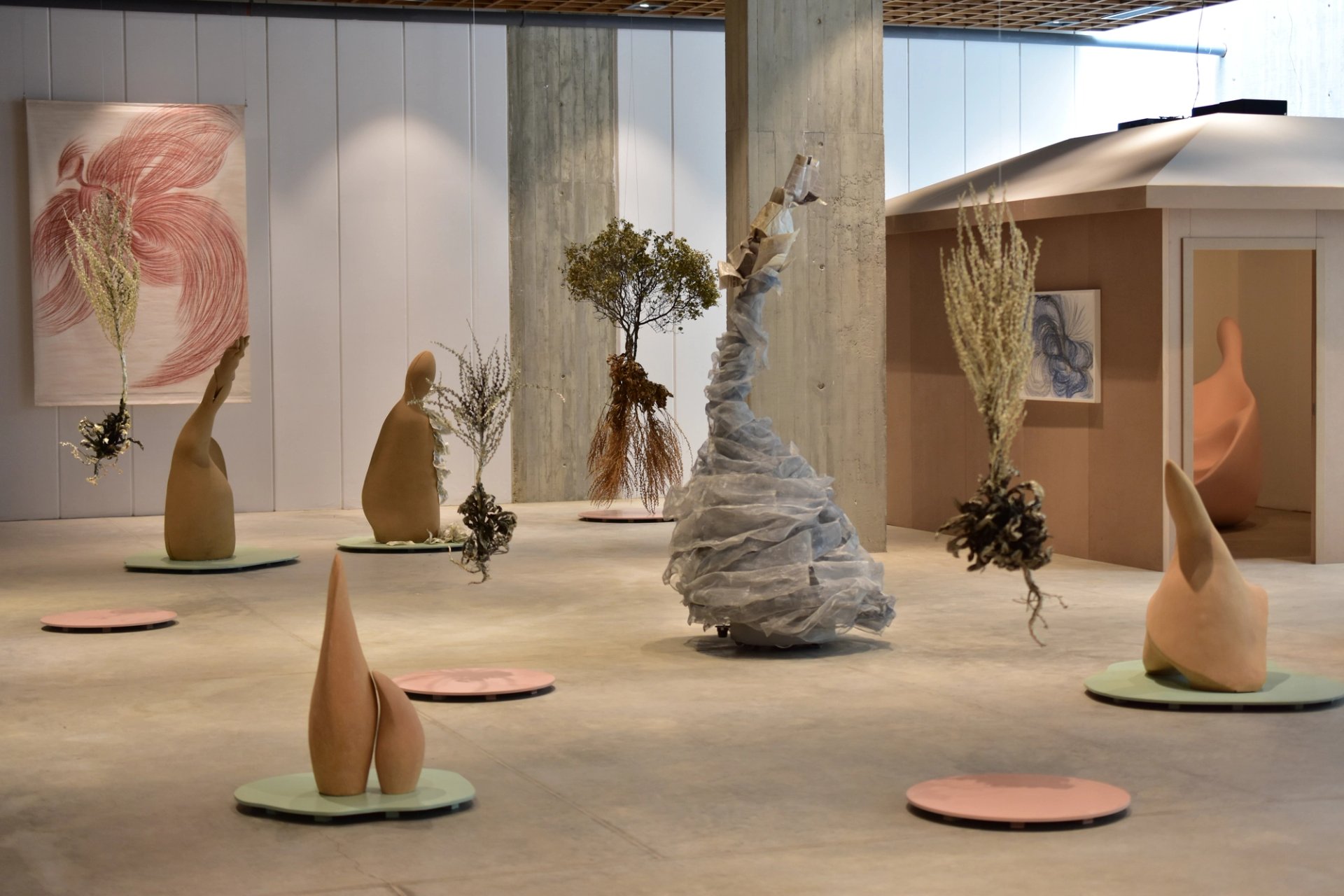
An installation view of Emanet/Troy Photo: © Osman Çapalov
Opened in 2018, the Troy Museum has received commendations from the European Museum Forum and the European Museum Academy for its narrative approach and innovative design. A cube sheathed in rust-coloured weathering steel, the building’s collection holds tens of thousands of artefacts, of which around 2,000 are currently on display.
Turkey has opened or rehabilitated nearly a half-dozen archaeology museums in the past decade, as part of a national strategy to strengthen government efforts to repatriate objects removed from the country over the centuries.
Among the recovered works at the Troy Museum are two dozen pieces of gold jewellery from the Penn Museum in Philadelphia that were initially taken by the German merchant Heinrich Schliemann in 1871. Most of that treasure remains at the Pushkin Museum in Moscow, seized by the Russians from Berlin as spoils of war in 1945. Last year, the Troy Museum unveiled a 6,500-year-old Kilia idol that was returned from the US.
“Troy is a great emanet [legacy] to Turkey,” Vuslat says. “Retelling the stories of the past through art in ways that resonate today is important … for people to find a connection with this history.”
Before dedicating herself to art, Vuslat, whose full name is Vuslat Doğan Sabancı, helped lead her family’s newspaper publishing company until the government forced its sale in 2018. She is married to the businessman Ali Sabancı. Forbes estimates their wealth at $550m and $960m, respectively.
Aslan says the artist covered the exhibition’s organisation, which has been shown in different incarnations twice before in Turkey. The bulk of the work, including twin kinetic statues sprouting tufts of newspaper pages, charcoal paintings of birds, mullein plants dipped in silver and suspended from the ceiling and acrylic-on-felt paintings, occupies a small gallery for temporary exhibitions.
In the main halls, Vuslat’s terracotta sculpture If to forgive is a virtue, so is not to forget (2023) joins a stand of enormous earthen urns excavated from the area. Two embroidered wool tapestries from 2024 with the word emanet in nine different languages hang in the Ancient World gallery. (The word emanet, with Semitic origins, is a relative of “amen.”)
The panels float above the sarcophagus of the Trojan Princess Polyxena from the sixth century BC, whose reliefs depicting what is thought to be the sacrifice of King Priam’s daughter are the earliest example of figurative carvings on a stone coffin ever found in Turkey.
Outside of the museum, sound installations of the calls of the birds Homer writes of in the Iliad line a stone path that leads to a large oak tree. A recording of Vuslat’s narration of a fairy tale about a sparrow echoes from its branches.
“To have the work overlap the area and not be isolated was a way to have one thing echo the other,” says the curator Paolo Colombo. “We are on a site of great strife, but it is also the site of the first Western epic, and the art is about transmitting these ideas and explaining their context.”
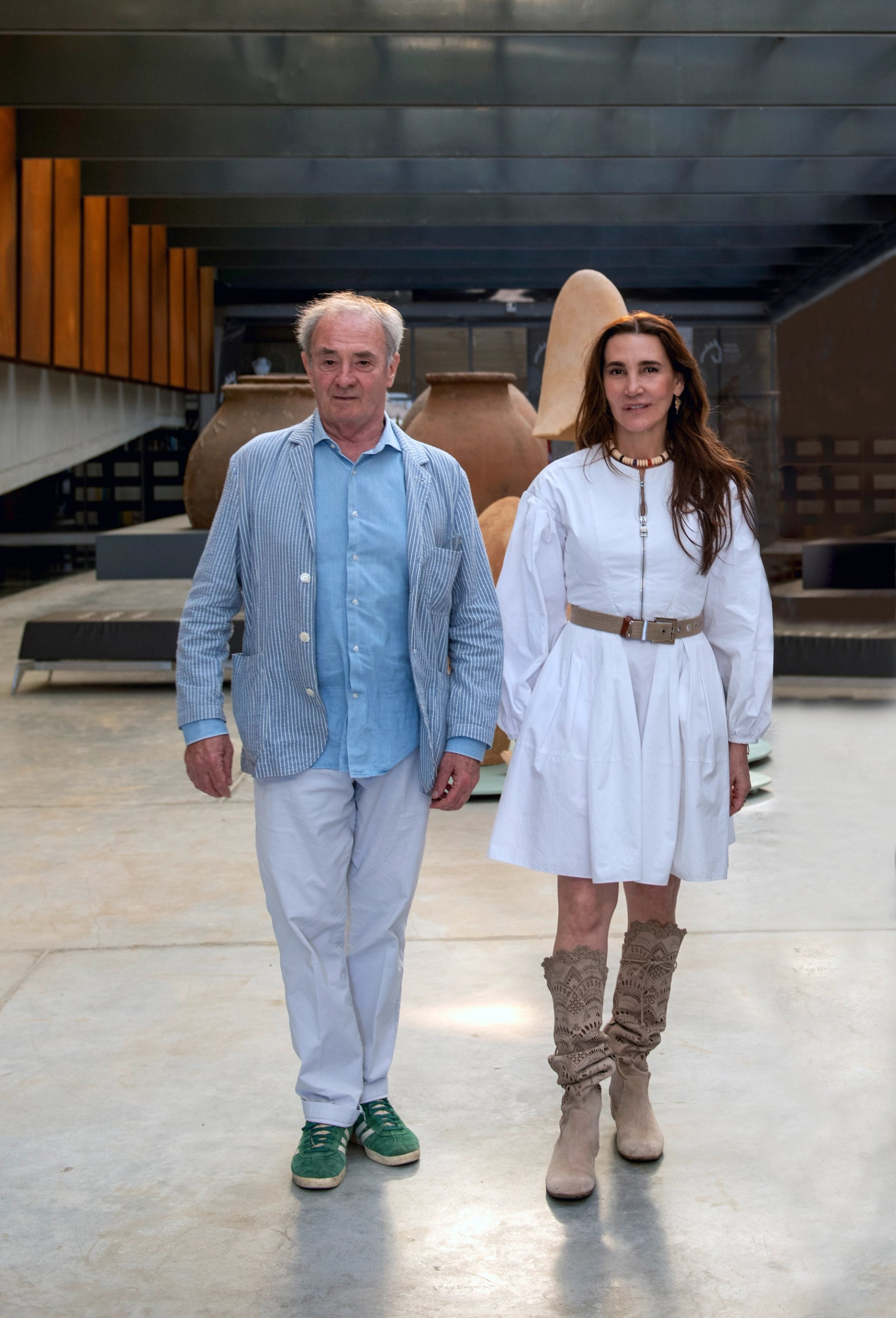
The show's curator, Paolo Colombo, and the artist Vuslat Photo: © Özgür Ölçer
The museum is also showing videos by the Kurdish artist Halil Altındere that reimagine the battle of Troy with figures from Star Wars.
Aslan has created a “contemporary art group,” a kind of residency programme that he says is the first of its kind in Turkey. Each dig season, artists join his team of archaeologists to produce work inspired by Troy, a World Heritage List-inscribed site whose existence was thought be a legend until its discovery in the 1870s.
“Contemporary art provides a different perspective, language and the emotions and concepts that we, as archaeologists and scholars, are sometimes unable to convey,” Aslan says.
UPDATE: This article's headline was updated to reflect that this is not the first-ever art show at Troy but the first time art is shown in its main halls


